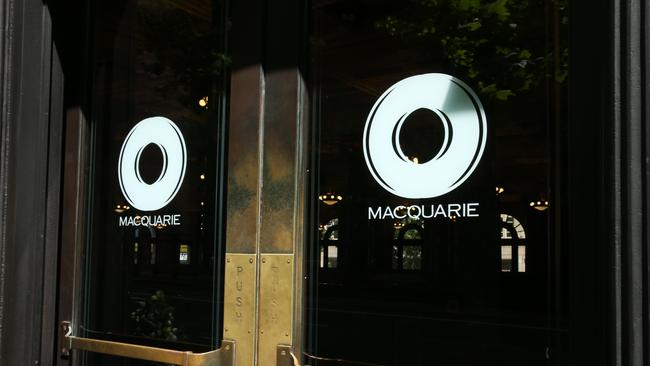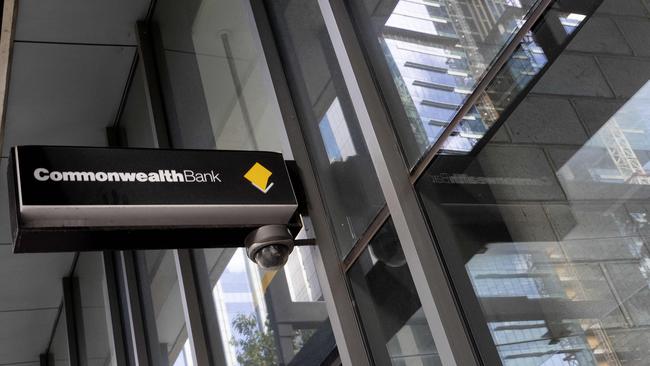PwC misses its moment to make real change
It’s a case of more of the same, with the same partners still calling the shots at the firm that by its own admission suffered repeated failures of leadership.

Business
Don't miss out on the headlines from Business. Followed categories will be added to My News.
When a senior PwC partner is entrusted with helping to build integrity into the tax system, but chooses to share confidential information and the later cover-up by top management explodes into a national scandal, the very idea of regaining trust requires a radical response.
The governance shake-up made in the wake of the tax saga falls well short of the pain threshold needed to be hit by PwC before its current and even future clients can be sure the big four accounting firm is working in their best interests.

It’s a case of more of the same, with the same partners still calling the shots at the firm that by its own admission suffered repeated failures of leadership, while throwing good governance and professional and ethical standards out the window.
PwC’s global troubleshooter, CEO Kevin Burrowes, appointed by the global partnership to steady the badly listing Australian business, has committed to stay for two years.
Any management team driving root-and-branch cultural change needs to plan its programs with horizons ranging from three to five years and beyond. Anything short of that is a cultural light makeover.
PwC’s partners voted on a series of governance changes. One was to appoint three independent directors to join its local board, including the position of chair, and another was the nomination of a CEO to undergo greater scrutiny from the board. Currently, PwC’s board is made up of 11 members, including the CEO, which mean partners are very much running the show.
Burrowes says the changes will deliver improved independence as well as “increased oversight to hold management to account”.
PwC’s global chair, Bob Moritz, has been pushing for independent board members across the “federation” of PwC firms, saying it makes debates “less insular” and improves the running of the board.
Even after the changes, PwC’s partners will continue to be involved in key decisions, including voting for internal board members, approving the extension of independent non-executives directors’ terms, and hiring and firing the CEO.
And the firm’s partnership model remains the driving force of governance inconsistencies. It’s this agreement which doesn’t give the board the power to fire a CEO, while the overriding principle in the agreement the board members abide by is the “protection of the interests of partners”.

PwC’s own investigation into its culture conducted by former NBN chairman Ziggy Switkowski pointed out the provision for three external members to join the PwC Australia board had existed even before the tax scandal came to light. However the firm’s partners had opted to not bring anyone in from the outside – even after years of gentle prodding from the global board.
The Switkowski report called out the board’s structural flaw where, as partners of the firm, members of the board report to the CEO or members of the CEO’s leadership team in their day-to-day business roles.
Given this circularity of reporting lines, this means PwC’s board members were perceived as having insufficient seniority to challenge the CEO or the leadership, adding to the perception inside the firm the board couldn’t challenge decisions and lacked real power.
This may have led to suboptimal management of important issues, Switkowski concluded in his report.
PwC says it is moving quickly to appoint the independent directors, although it has been facing some hurdles getting experienced names, given they need to have no links to businesses that are already clients of the firm, or former partners. Nor do the appointments change the overriding structural problems of the board.
The packages of reforms might be a big step for auditors, but are a timid step in the real world.
Most of PwC’s clients have far more sophisticated governance standards in place. As long as the partnership agreement remains largely untouched, PwC really doesn’t have a motivation to change its ways.
Banks rethink Macquarie battle
The looming end of Bankwest’s branch network, says as much about how the big banks are planning to respond to Macquarie Bank as a disruptive force, as it does about the future of multibrand networks.
Commonwealth Bank this week said it would shut down around 45 Bankwest branches by the end of October and move the brand to a digital only brand. The 350 people impacted by the move will be offered new roles at CBA. It acquired the regional lender at the height of the global financial crisis.

CBA’s decision follows Bendigo Bank’s call to bring an end to the Adelaide Bank brand. Bendigo had long converted the Adelaide Bank branch network to its own brand, although Adelaide Bank had been used in the mortgage market. And after more than 15 years, Westpac has started to streamline its costly multibrand network, with its St George and Bank of Melbourne branches increasingly being co-located inside a Westpac branch.
The big banks have been grappling with how to respond to Macquarie Bank that has been scooping up market share through its pure digital model. Without a costly branch network for distribution, Macquarie has been able to offer sharper pricing as well as full online banking services. Much of its strategy has been about targeting tech-savvy professionals that also come with savings as well as big borrowing needs.
Macquarie is now sitting on a home loan book of nearly $120bn and is now starting to make waves on business lending. It started investing in its retail bank a decade ago switching from a white label broker reliant model to focus on its direct lending model, it now has nearly 2 million customers. Macquarie is now the fifth-largest retail bank, with a share bigger than Bendigo or Suncorp.
CBA has flagged for several months intends to start moving Bankwest over to a solely digital model. It will continue to use the brand for mortgage broker distribution, and this meant it had to make a big call on the fate of its branch network.
CBA is now eyeing Bankwest as an attacker against Macquarie, and this will allow it to operate on different economics from its flagship “yellow” CBA brand. The aim will be to target the customers Macquarie has been going after without cannibalising CBA’s core bank.
The Australian Competition Tribunal in last month’s ruling where it backed ANZ’s acquisition of Suncorp noted Macquarie has been able to make rapid inroads into the mortgage market over the past decade, mostly at the expense of the big four banks. It acknowledged Macquarie has been the only notable disruptive force over the past bank.
Although it comes with a costly upfront investment, digital has been able to level the distribution playing field. Bendigo has been able to quickly build up a customer base of nearly 1 million on its new Up digital bank mostly through word of mouth, and the regional lender is planning to roll out more services across the platform.
National Australia Bank is using Ubank as its attacker brand, with a mortgage book nearing $13bn. UBank runs on a new high-tech platform and added more than 175,000 customers last year. To show the shifting target market of multibrand networks, more than half of UBank’s customer base is under the age of 55.
Bankwest’s shift to digital marks another milestone for the 130-year-old bank brand.
CBA was a reluctant buyer of Bankwest at the height of the global financial crisis, then chief executive Ralph Norris was in London at the time he got a call from Australia’s bank regulator that he needed to take charge of the Perth-based lender.

Bankwest’s British parent HBOS was facing collapse with mounting losses linked to its global expansion. Bankwest was also facing deep losses from an aggressive east coast expansion, particularly around business and commercial property lending. With its parent bleeding cash, it was doubtful it would have survived as a stand-alone entity with funding markets freezing up. HBOS was bailed out by the UK Government in October 2008 along with other British lenders RBS and Lloyds TSB.
CBA’s Norris got Bankwest at the ultimate knockdown prices – paying just $2.1bn was just 0.8 times the book value of Bankwest. Although CBA would argue it had to inject another hundreds of millions of additional capital into the bank and take losses on commercial loans.
The deal was co-ordinated at lighting speed by APRA, the Reserve Bank and ASIC, with competition regulator ACCC being forced to sit out of the process. Only after the deal was done, the competition regulator gave retrospective approval.
The buyout turbocharged CBA’s retail market share in Western Australia, giving it exposure to the mining super cycle that was to come. CBA supported Bankwest’s east coast franchise for some time – even taking naming rights to Parramatta Stadium in Sydney’s west, although in recent years it has been scaling down the branch network where it now has no physical branch network outside of Western Australia.
johnstone@theaustralian.com.au
Originally published as PwC misses its moment to make real change



